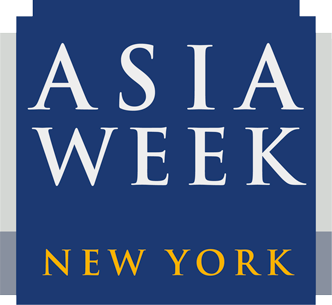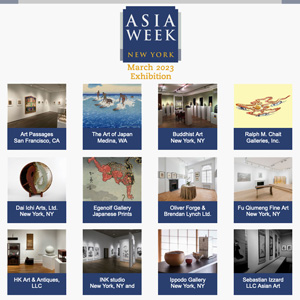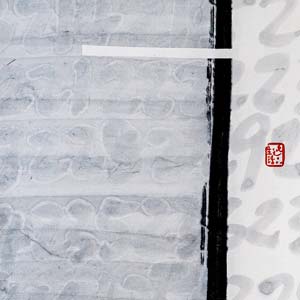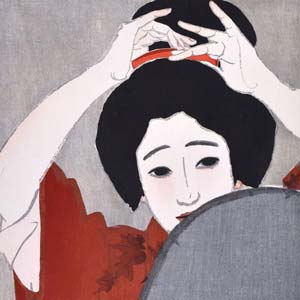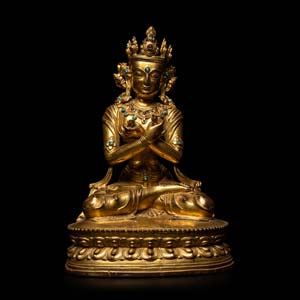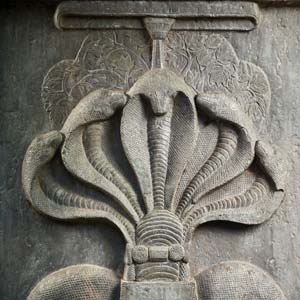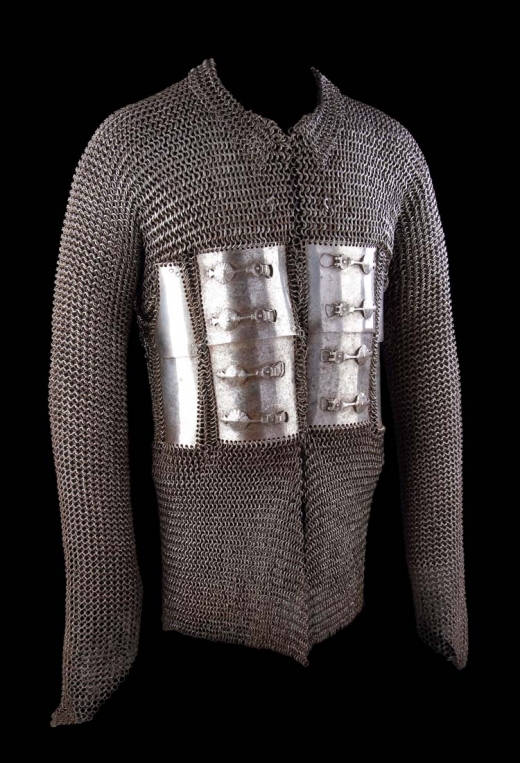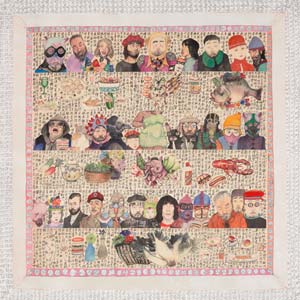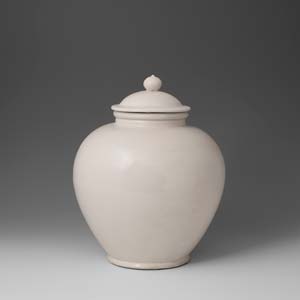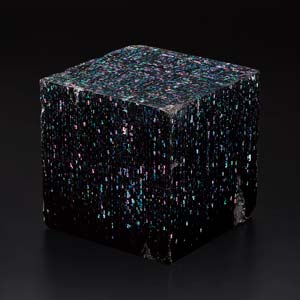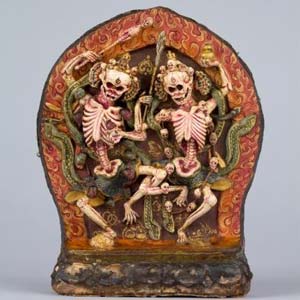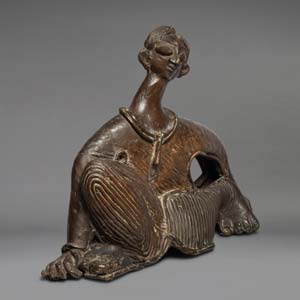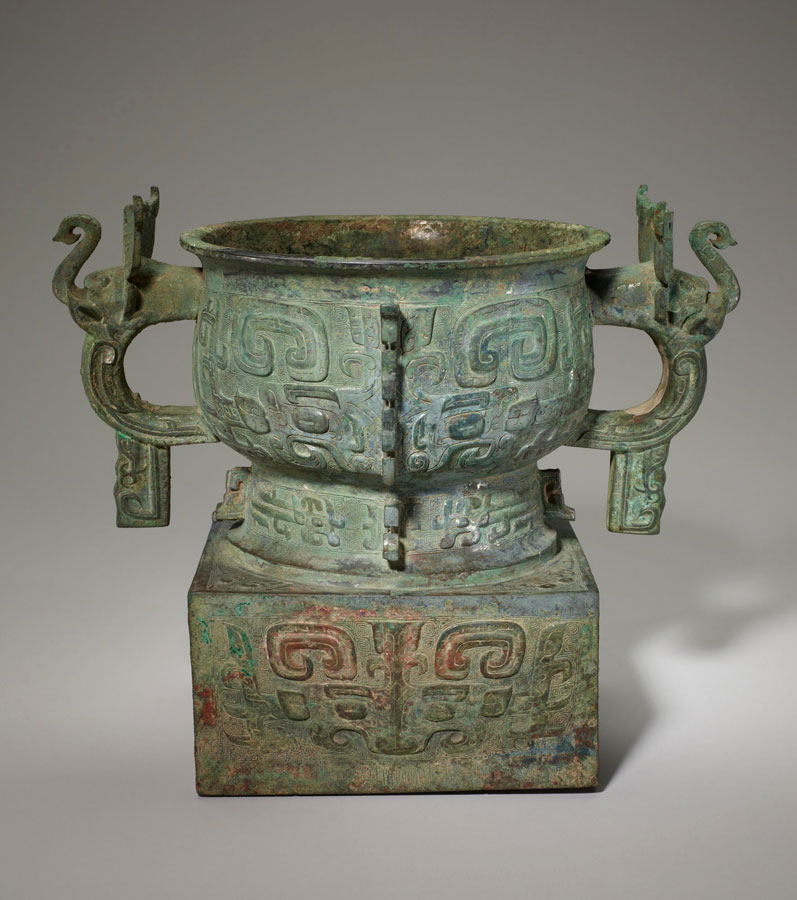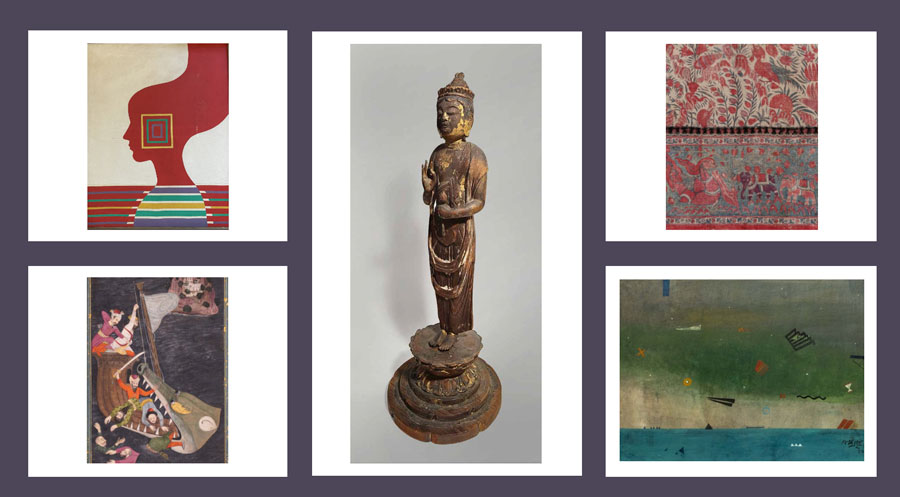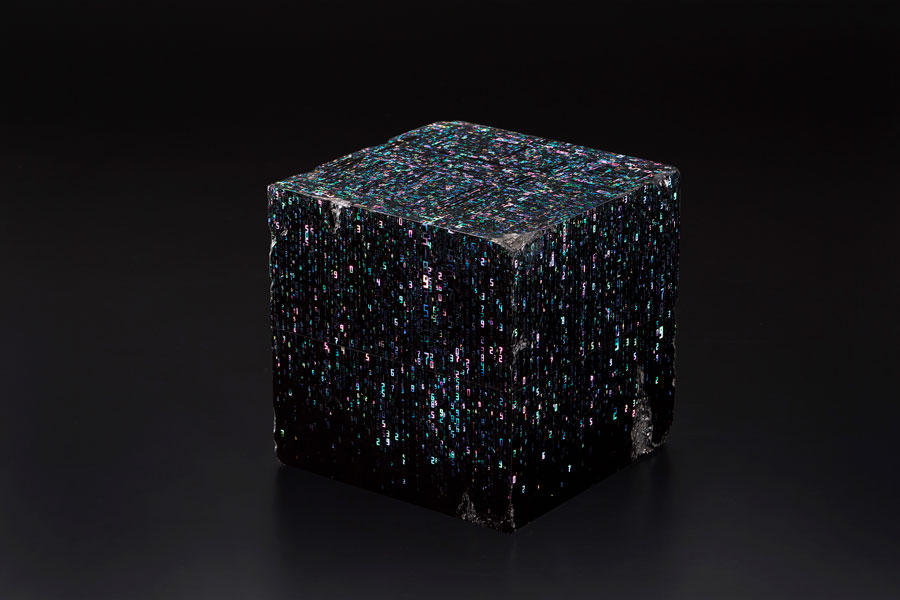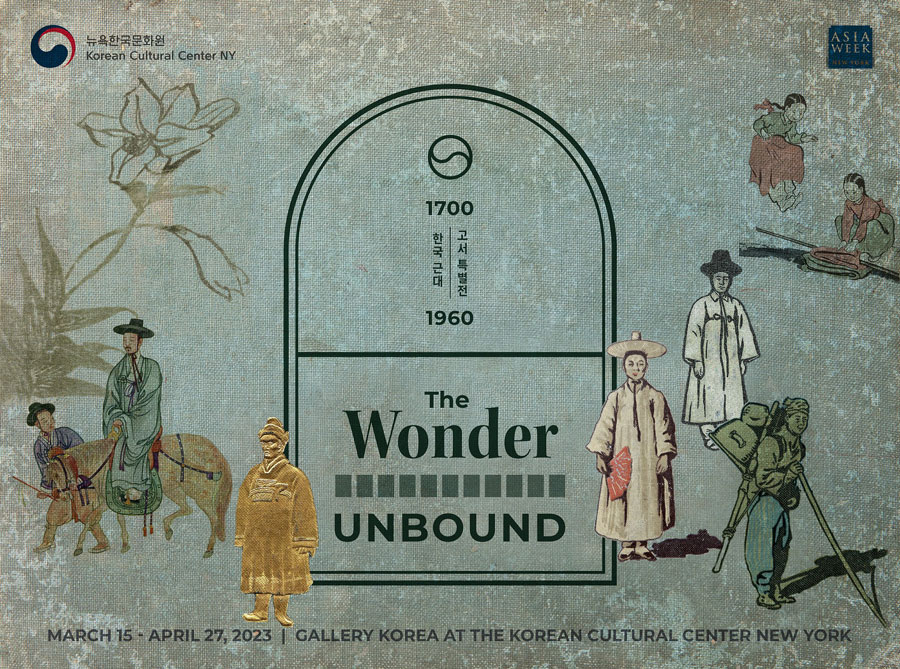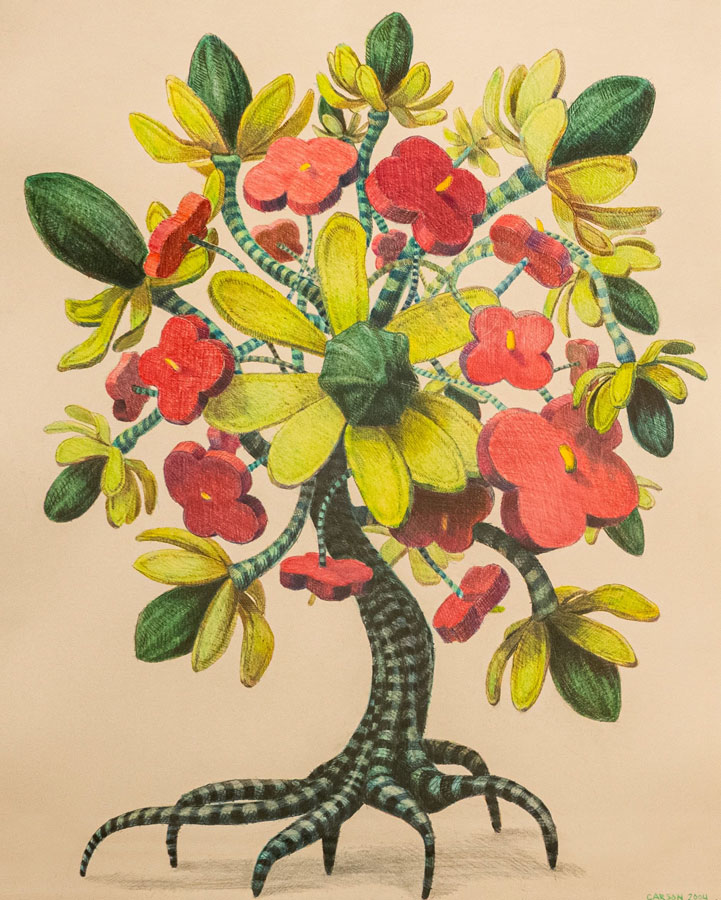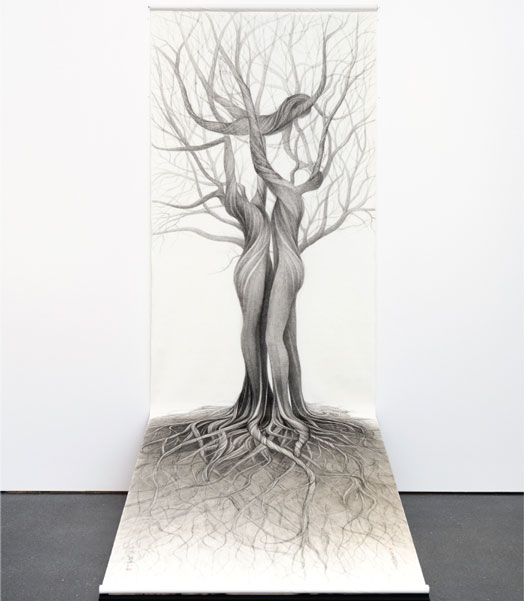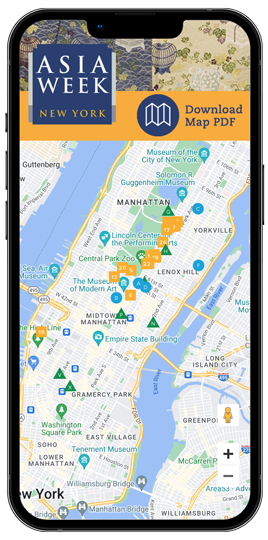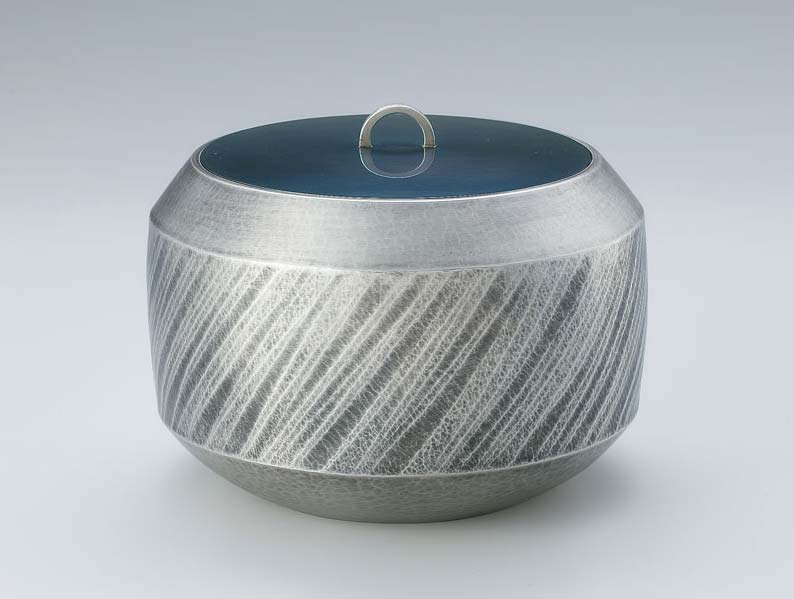
Hagino Noriko, Uchidashi Silver Water Jar 02, 2021, Silver and copper h. 6 1/4 x dia. 7 1/2 in. (16 x 19 cm), courtesy Onishi Gallery
Even more art to discover!
Asia Week New York 2023 continues with more previews:
- 21 gallery exhibitions open today, with 4 additional online-only shows! Learn more in our pdf guide, which you can take with you while you gallery hop. Page 11 has the full list of dealer showcases. Visit the dealers’ pages for more details, and check out our interactive map in case you get lost! If you prefer the printed guide, it is available at the galleries and auction houses.
- Akar Prakar, Art Passages, Egenolf Gallery, Kaikodo LLC, and Thomas Murray are live in Asia Week New York’s Online Exhibition.
- Bonhams, Christie’s, Doyle, Heritage Auctions, iGavel and Sotheby’s are holding auction viewings today.
TONIGHT’S EVENING RECEPTIONS
(organized by event opening and duration)
- Fu Qiumeng Fine Art, 6–8pm
- MIYAKO YOSHINAGA, 6–8pm
- Rubin Museum of Art, 6–10pm
The Asia Week New York 2023 Online Exhibition is live. Browse highlights from the exhibiting dealers as well as selections from upcoming auctions. Some of this year’s participants are showing online only. The web address for the Online Exhibition is: march2023.asiaweekny.com

All of the dealers mentioned below are open today.
Fu Qiumeng Fine Art
Scholten Japanese Art.
Kapoor Galleries.

Receptions, openings, ongoing exhibitions are listed here.
At 4:30pm today, this lecture explores the lived traditions of early Indian Buddhism as witnessed in the rich archaeological and artistic legacy of the Deccan, the focus of a major exhibition Tree & Serpent: Buddhist Art in Early India, 200 BCE–400 CE. Free with Museum admission.
Metropolitan Museum of Art

The Asia Week daily digest features one auction highlight per day.
Christie’s.
We hope you’ve enjoyed this daily digest for Day 2 of our 2023 edition! Discover even more exhibitions, auctions and events at asiaweekny.com.
